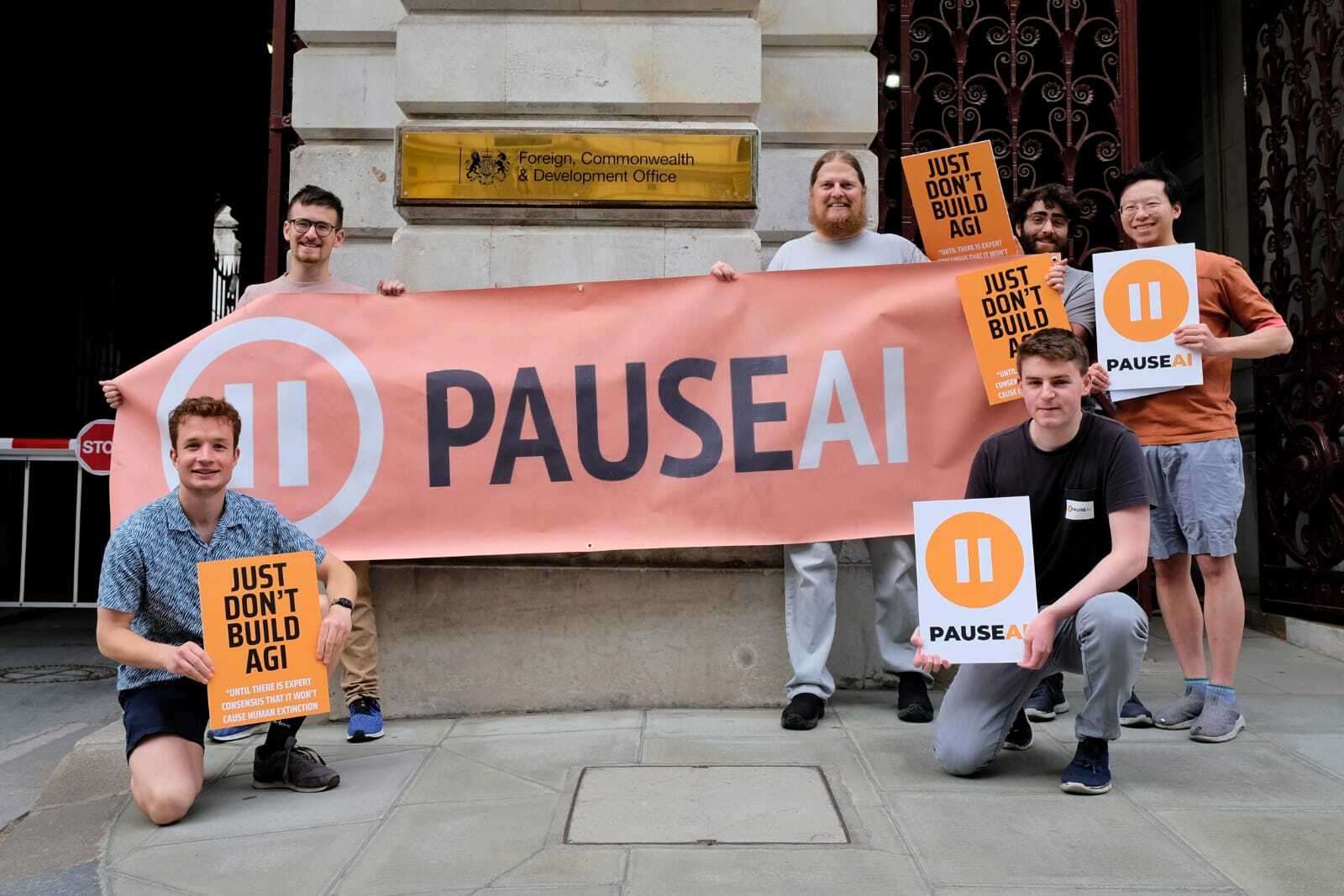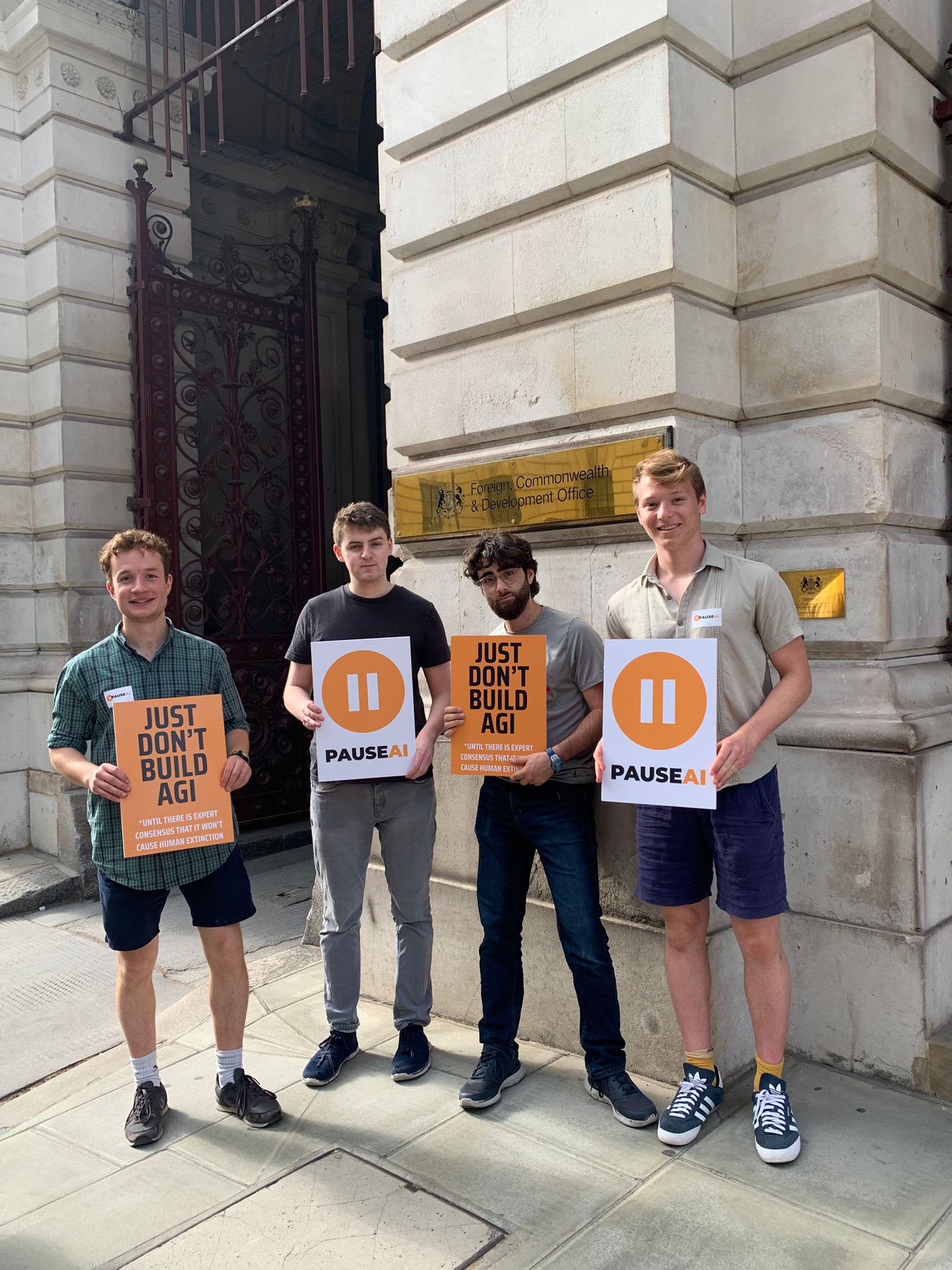Hi!
📜 With the moratorium treaty competition now closed, we extend our best wishes to all participants. Judges are finalising scores for the entries. Winners will be announced this week. You can see all the submissions here.
Stay tuned!
📸 PauseAI protests updates
✊ Throwback to the powerful #PauseAI protests in London on July 13th and July 18th. Advocates gathered outside the FCDO, urging the United Nations Security Council to implement a global pause on the largest AI training runs. Thank you for your support! #PauseAI 📸
📢 Mark your calendars for the upcoming #PauseAI protest in the Netherlands: #PauseAI Protest @ Wijnhaven, The Hague on 11th of August, 16:00 - 17:00Sign up and get details here.
📃 Policy updates
On the policy front, in the past month we focussed on Australia:
- We have made our submission to Safe and Responsible AI in Australia discussion paper.
- Special thank-you to Shine Lawyers for their a supplementary submission (also in PDF) regarding protections and legal recourse against harms caused by AI.
- Because Google's used the consultation to argue against copyright in relation to training AI models, we made a counterbalancing supplementary submission on this topic as well.
Next, we are working on a submission to the NSW inquiry into AI and updating our main campaign policy document.
Do you know of other inquiries? Please let us know. If you want to contribute to the upcoming consultation papers, please respond to this email.
📜Petition updates
🦘 Nik Samoylov's petition (EN5163) has successfully met the requirements for petitions and was recently presented to the House on 31/07/2023. It has been referred to Ed Husic, the Minister for Industry and Science. According to the petition requirements, Ministers have 90 days from its presentation in the House to provide a response.
🦄 For our advocates in the UK, we have an ongoing petition by Greg Colbourn calling for a global moratorium on the development of AI technology due to extinction risks. The petition has garnered 38 signatures so far.
💳 Become a paid subscriber to the campaign
We have just prepared the financial reports for the financial year ended 30 June 2023. In a nutshell, we had AUD 37.33 in the bank at the end of the year. Reports are accessible to paid members.
In the coming months, our expenses will include general upkeep of the campaign as well as a few bursts in paid media. Targeted billboards and audio ads will be back on.
If you are not yet a paid member, please do subscribe.
Thank you for your support! Please share this email with friends.
Campaign for AI Safety



This is brilliant. Most people here I imagine disagree, but my inclination is that this might be among the highest EV routes to AI safety.
It can increase publicity and galvanize public support against AI capability improvement.
Legal routes, like the one against Google can have success even with limited pubic support. We saw that recently in new Zealand with the government successfully sued for artificial lowering carbon prices
As the movement grows you might actually get concrete policy success - any slowing down has to be good.
Every important social movement starts somewhere. Keep up the good work!
Awesome! Keep up the good work @Jolyn Khoo @Nik Samoylov !